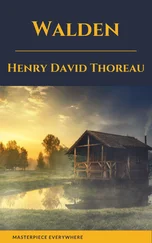Henry Roth - Call It Sleep
Здесь есть возможность читать онлайн «Henry Roth - Call It Sleep» весь текст электронной книги совершенно бесплатно (целиком полную версию без сокращений). В некоторых случаях можно слушать аудио, скачать через торрент в формате fb2 и присутствует краткое содержание. Год выпуска: 1992, Издательство: Farrar, Straus and Giroux, Жанр: Классическая проза, на английском языке. Описание произведения, (предисловие) а так же отзывы посетителей доступны на портале библиотеки ЛибКат.
- Название:Call It Sleep
- Автор:
- Издательство:Farrar, Straus and Giroux
- Жанр:
- Год:1992
- ISBN:нет данных
- Рейтинг книги:4 / 5. Голосов: 1
-
Избранное:Добавить в избранное
- Отзывы:
-
Ваша оценка:
- 80
- 1
- 2
- 3
- 4
- 5
Call It Sleep: краткое содержание, описание и аннотация
Предлагаем к чтению аннотацию, описание, краткое содержание или предисловие (зависит от того, что написал сам автор книги «Call It Sleep»). Если вы не нашли необходимую информацию о книге — напишите в комментариях, мы постараемся отыскать её.
, his first novel, in 1934, it was greeted with critical acclaim. But in that dark Depression year, books were hard to sell, and the novel quickly dropped out of sight, as did its twenty-eight-year-old author. Only with its paperback publication in 1964 did the novel receive the recognition it deserves.
was the first paperback ever to be reviewed on the front page of
, and it proceeded to sell millions of copies both in the United States and around the world.
Call It Sleep
Call It Sleep — читать онлайн бесплатно полную книгу (весь текст) целиком
Ниже представлен текст книги, разбитый по страницам. Система сохранения места последней прочитанной страницы, позволяет с удобством читать онлайн бесплатно книгу «Call It Sleep», без необходимости каждый раз заново искать на чём Вы остановились. Поставьте закладку, и сможете в любой момент перейти на страницу, на которой закончили чтение.
Интервал:
Закладка:
In the last section, David runs from his father’s wrath after the rabbi discloses the child’s story denying Albert’s paternity, insisting that his real father was a Christian organist, his mother’s first love. To protect himself, David grabs his father’s zinc milk ladle, and rushes to the crack in the trolley car tracks where, in an earlier scene with neighborhood boys, he witnesses the release of electric light from a short circuit. Associating the light between the tracks with God, David seeks refuge from the parents he believes have betrayed him. The electric charge is conducted through his body and he falls unconscious onto the cobblestones.
What follows is the most artistically innovative section of the book, as his loss and subsequent regaining of consciousness, his death and rebirth, are depicted among the cries of urban immigrants in the accents of their native tongues. Here social and spatial boundaries are transcended as a mass of individuals from diverse backgrounds fear and grieve for the prostrate child on the city street.18 With a minimum of omniscient narration, Roth uses two alternating modes in this climactic scene — reported speech of witnesses to David’s suffering, before, during, and after the event, and italicized sections which are psycho-narration, rendering David’s perceptions in formal and self-consciously poetic language. The former are multilingual and multidialectical; the latter are self-conscious literary English. The alternation between the styles creates ironic contrasts as one mode spills over into the other. The dialogue of the street is marked by its vulgarity and preoccupation with sex. “Well, I says, yuh c’n keep yer religion, I says. Shit on de pope,” says O’Toole in Callahan’s beer-saloon at the start of this section. “… w’en it comes t’ booze I says, shove it up yer ass! Cunt fer me, ev’ytime I says” (411). When David’s thoughts as he runs toward the rail are juxtaposed to O’Toole’s declaration, they resonate with sexual as well as religious connotations. “Now! Now I gotta. In the crack, remember. In the crack be born” (411). The italicized report of his consciousness, occurring simultaneously, is marked by its epic and lofty tones.
More than any other section of the book, this final sequence, with its Joycean epiphanies and stream of consciousness and with a collage of disembodied voices reminiscent of Eliot’s Waste Land, identifies Roth as a modernist writer. The italicized section is very deliberately artistic in the tradition of English and European literature, with languages and constructions that are borrowed from medieval romance quests and from epics. The dipper is like a “sword in a scabbard” (413), “like a dipped metal flag or a grotesque armored head” (414), his father is a mythical figure, “the splendor shrouded in the earth, the titan, dormant in his lair” (418), and his action of inserting the dipper is compared to the end of a romantic quest, “the last smudge of rose, staining the stem of the trembling, jagged chalice of the night-taut stone with the lees of day” (418). The moment of his electrocution is filled with “radiance,” “light,” “glory,” and “galaxies.” It is self-consciously literary to the point of even tunneling into the “heart of darkness” (429). In this section of the book, Roth demonstrates clearly his identification with a tradition of English literature. There is only one reference to another culture, and it is to “Chadgodya” and also to the father’s command: “Go down” (428), with Moses clearly implied.
In the reported speech of the bystanders, Roth makes use of dialect: Yiddish, German, Irish, and Italian, and selective reproduction of other languages, namely Yiddish and Italian. But, most important, he depicts the convergence of the English/Christian tradition and the Yiddish/Hebrew Jewish tradition, and their equivalents in the social/historical and psychological motifs of the book.
In psychological terms, David’s thoughts about the crack between the car tracks where he seeks a spiritual rebirth through contact with a masculine God also evoke his desire to return to the womb, to the mother and the source of that oceanic oneness that he now seeks in a sublimated form. It is his mother who forces the separation by sending him into the street to escape his father’s tyranny, and therefore David is both running away from his actual mother and running toward an image of that mother in the crack between the car tracks. The electric force between the tracks is thus the power of both the male and the female principles, his father and his mother, the God of Isaiah and the mother image at once. At the same time, as David flees from his wrathful father brandishing a whip, and he seeks refuge in the divine power between the cracks, in a paternal God who will punish his punitive father, he also imagines his own father as that male God who will punish him for his sin of denying his real fatherhood and taking on a Christian past. David dies a symbolic death as he imagines that he no longer sees his own face when he peers into a series of mirrors reflected infinitely. As he is driven out of his home and exposed to the electric charge, he feels himself become “the seed of nothing.… And he was not…” (429). Bystanders conclude that he is dead. The first glimmer of regaining consciousness — “And nothingness whimpered being dislodged from night” (430) — occurs as he recalls coal in the cellar below the city streets, the light of God powerful enough to strike down his father, to still “the whirling hammer.” Just as David had symbolically killed his father when he invented a story about a Christian father who was an organist, so, in his semiconscious state, a divine power greater than that of his father stills the dread hand and voice and frees him. The psychological dimension of his ordeal is one of a transformation of identity away from the parental and toward the spiritual.
While the social backdrop for this scene of death and rebirth is multilingual, the individual experience as rendered through David’s semiconscious monologue is entirely in a lofty and literary English, as if David dies out of his immigrant life and is born into the world of English literacy and culture, the world of Henry Roth’s literary identity, but at the cost of killing both the father and the mother. In traditional Ashkenazic Jewry, Yiddish is referred to as the mother tongue, mame-loshn, and the sacred language Hebrew as the father language, or fotershprakh. 19 In this case, David abandons both Yiddish and Hebrew, and the multilingual immigrant din of the street, for an English literary language that speaks through him. It is presented as an accident brought on by multiple misunderstandings in a multicultural world. David becomes an emblem of Henry Roth, the bilingual immigrant and Jewish writer, who is cut away from the mother tongue, whose proficiency in the newly acquired language exceeds that of the mother tongue, but who cannot transfer his emotional involvement to that acquired language.20 Furthermore, the loss of the mother tongue in the process of Americanization carries an additional hazard for the Jewish writer, namely the Christian culture with which English is imbued. This is developed in the liberation from slavery theme which Roth pursues throughout the last section of the novel.
This theme is cast in language beyond the boy’s personal plight, language with social, historical, and religious dimensions. The social and historical motifs are conveyed in references to the class struggle, as expressed in the dates of attempted revolutions and periods of worker oppression; recent Jewish history in the form of the pogrom; and the American dream as a form of liberation from bondage for the immigrant. An unidentified voice proclaims the message of socialist ideology: “‘They’ll betray us!’ Above all these voices, the speaker’s voice rose. ‘In 1789, in 1848, in 1871, in 1905, he who has anything to save will enslave us anew!” (417). Such passages are often cited as evidence that Call It Sleep is truly a proletarian novel. In addition to the class struggle, Roth also refers to the Eastern European background of his characters in the Yiddish calls for rescue, quoted in Yiddish and without translation, “‘Helftz! Helftz! Helftz Yeedin! Rotivit!’” (421). Finally, the same soapbox orator alludes to the national American context in the mocking evocation of the Statue of Liberty, symbol of the Golden Land: “And do you know, you can go all the way up inside her for twenty-five cents. For only twenty-five cents, mind you! Every American man, woman and child ought to go up inside her, it’s a thrilling experience” (415). That David’s oppressive life and near-death run parallel to the lives of these immigrant bystanders is further emphasized by Roth’s reference to them as “the masses … stricken, huddled, crushed by the pounce of ten-fold night” (422). All of this is rendered in a multilingual collage.
Читать дальшеИнтервал:
Закладка:
Похожие книги на «Call It Sleep»
Представляем Вашему вниманию похожие книги на «Call It Sleep» списком для выбора. Мы отобрали схожую по названию и смыслу литературу в надежде предоставить читателям больше вариантов отыскать новые, интересные, ещё непрочитанные произведения.
Обсуждение, отзывы о книге «Call It Sleep» и просто собственные мнения читателей. Оставьте ваши комментарии, напишите, что Вы думаете о произведении, его смысле или главных героях. Укажите что конкретно понравилось, а что нет, и почему Вы так считаете.



